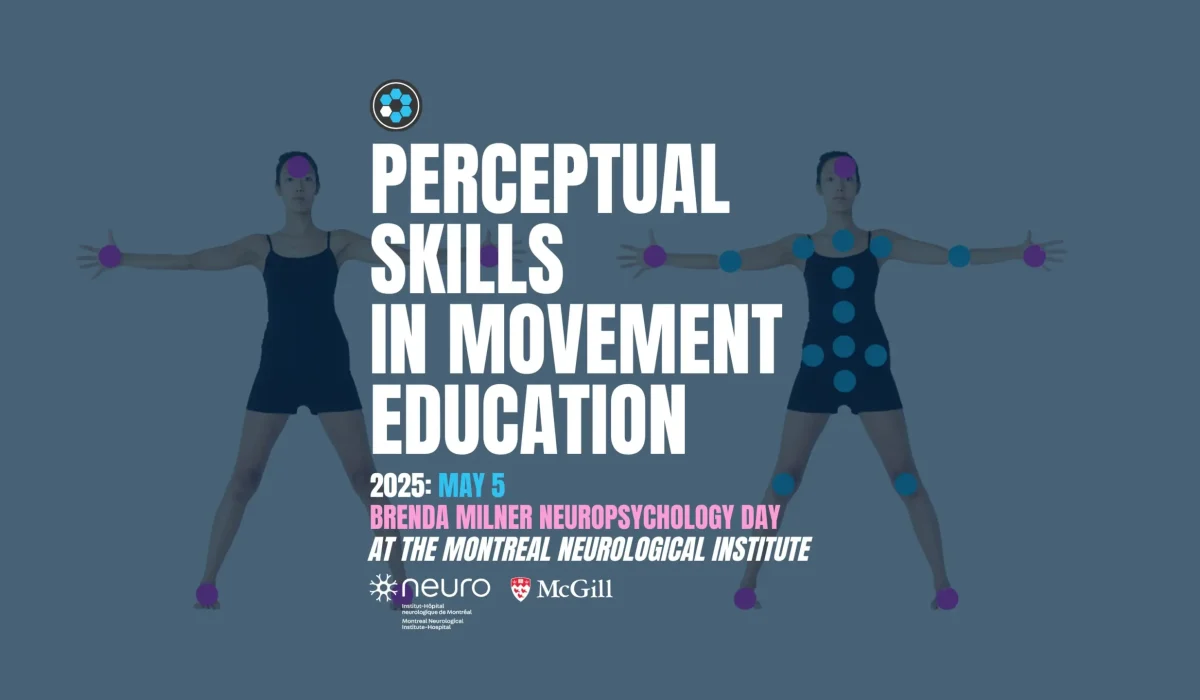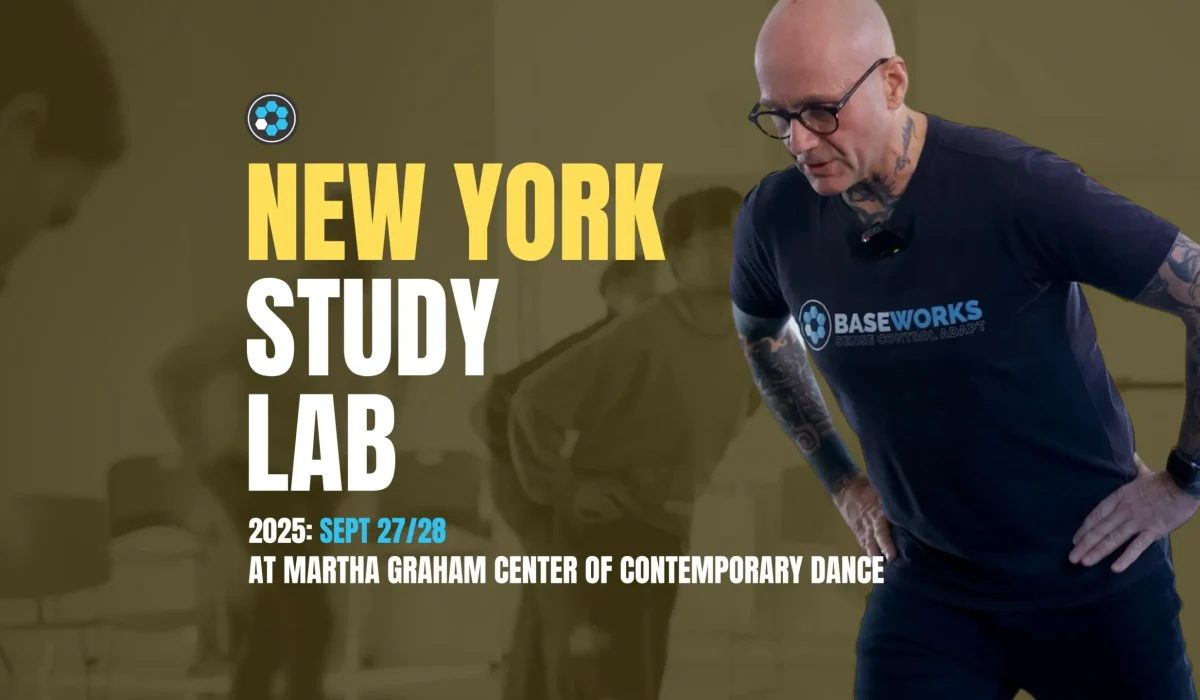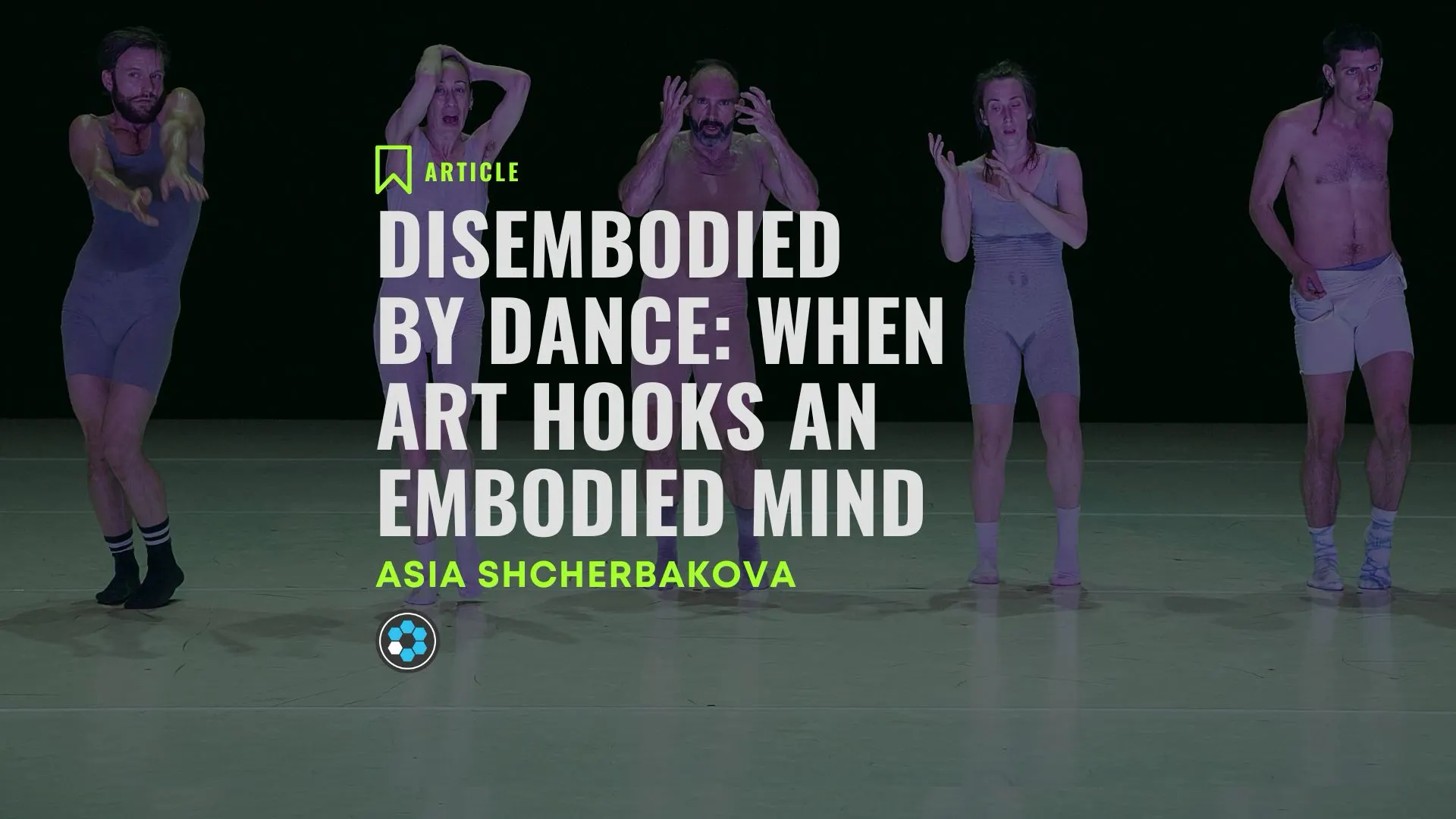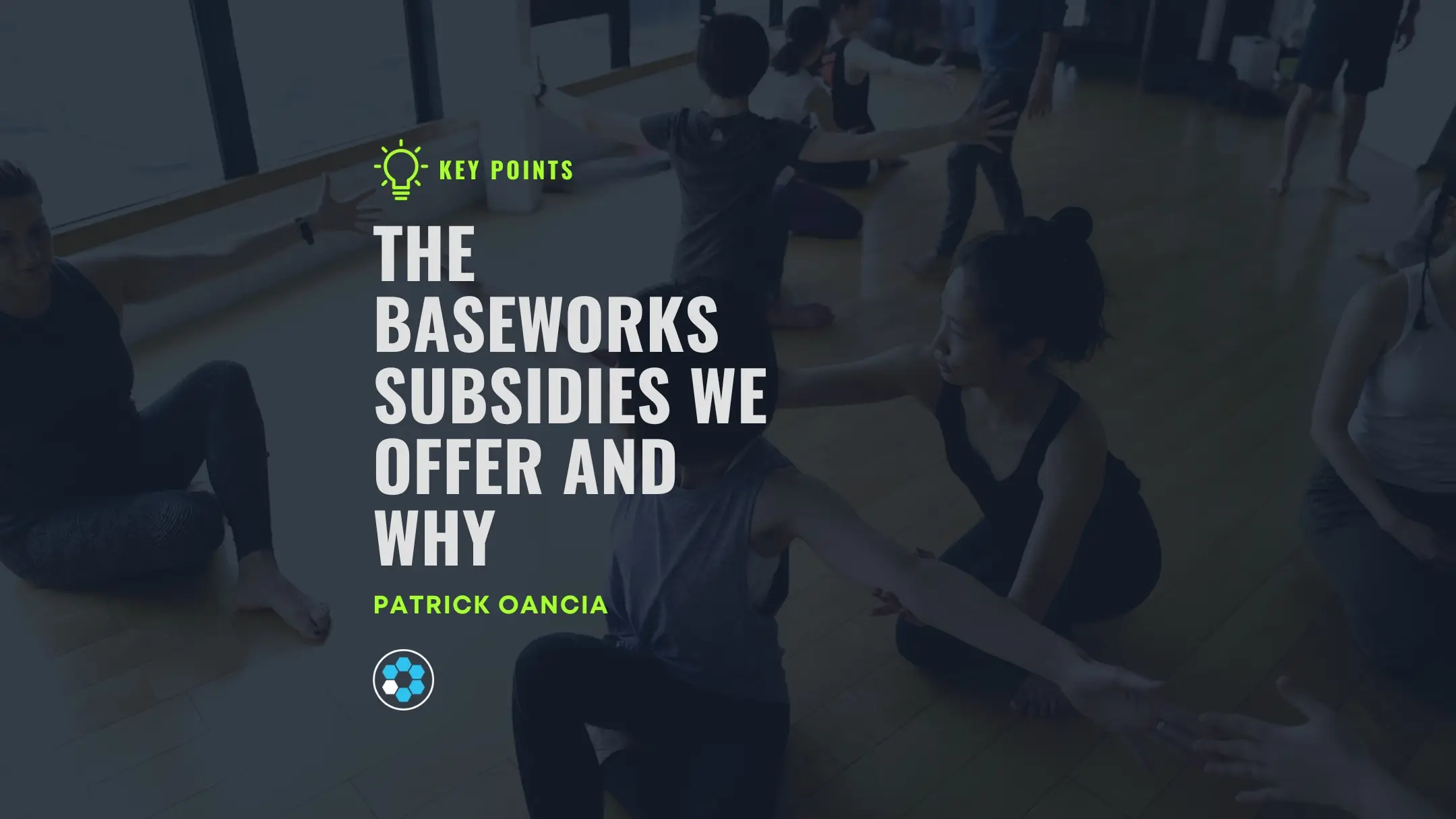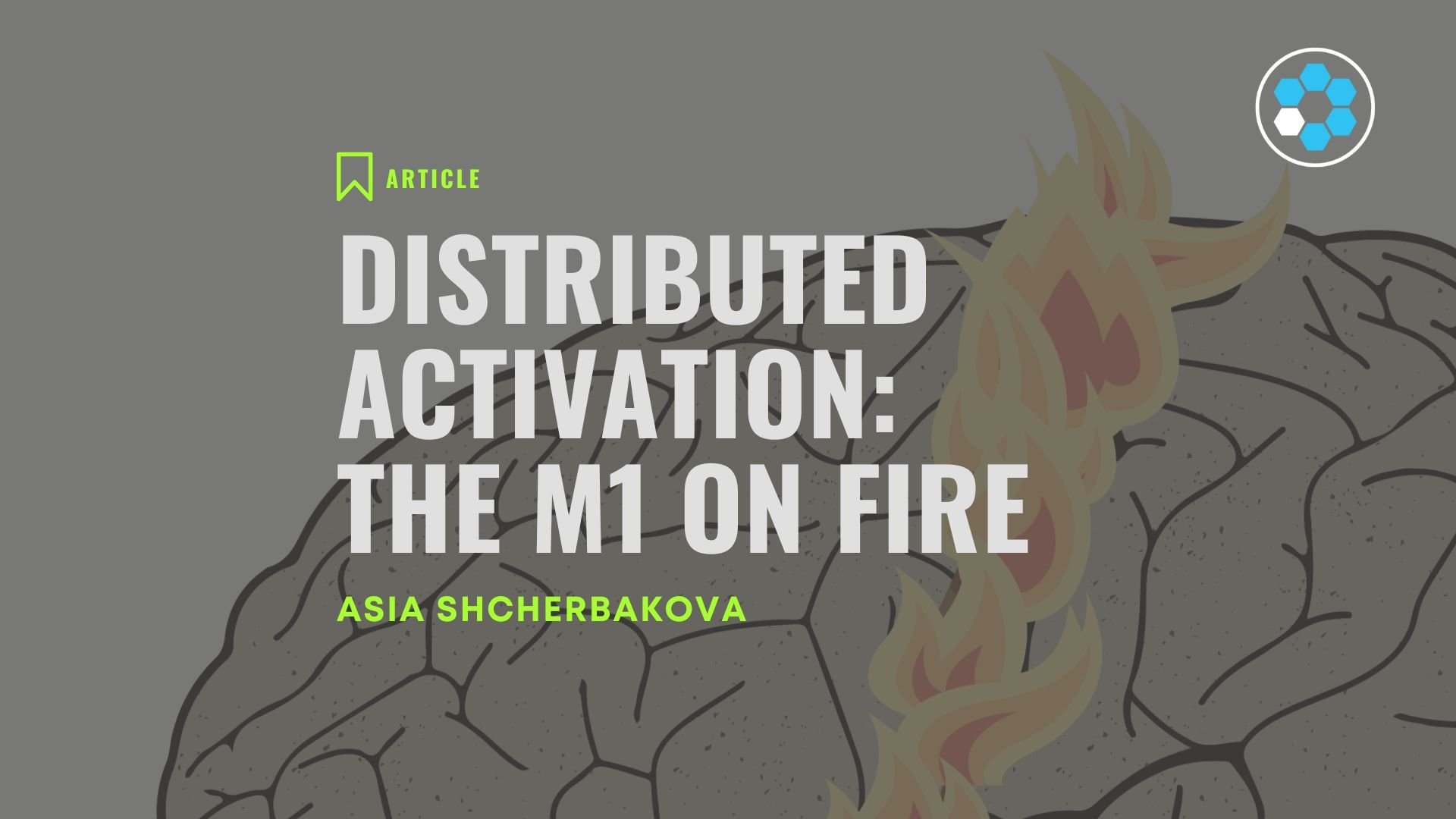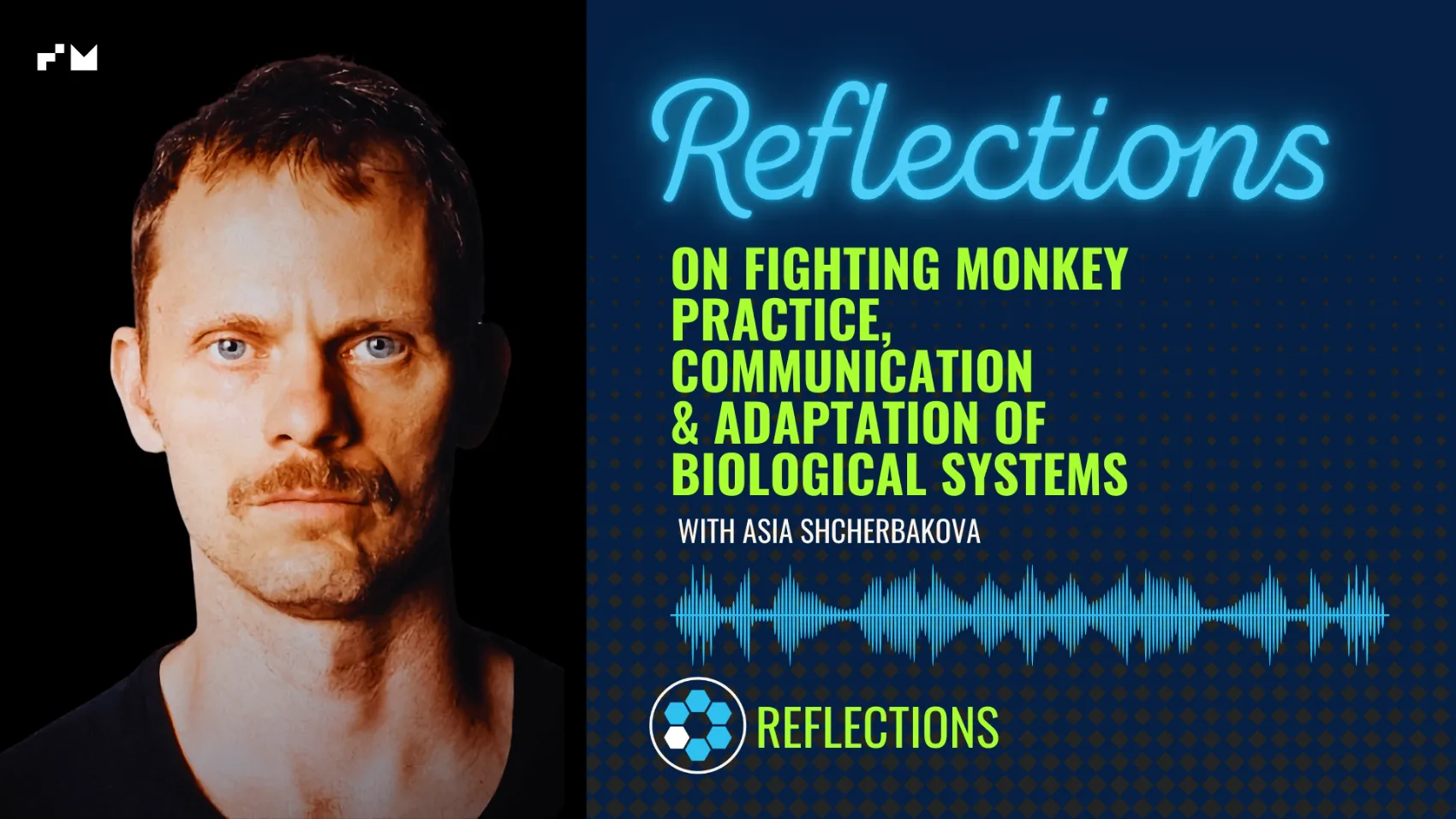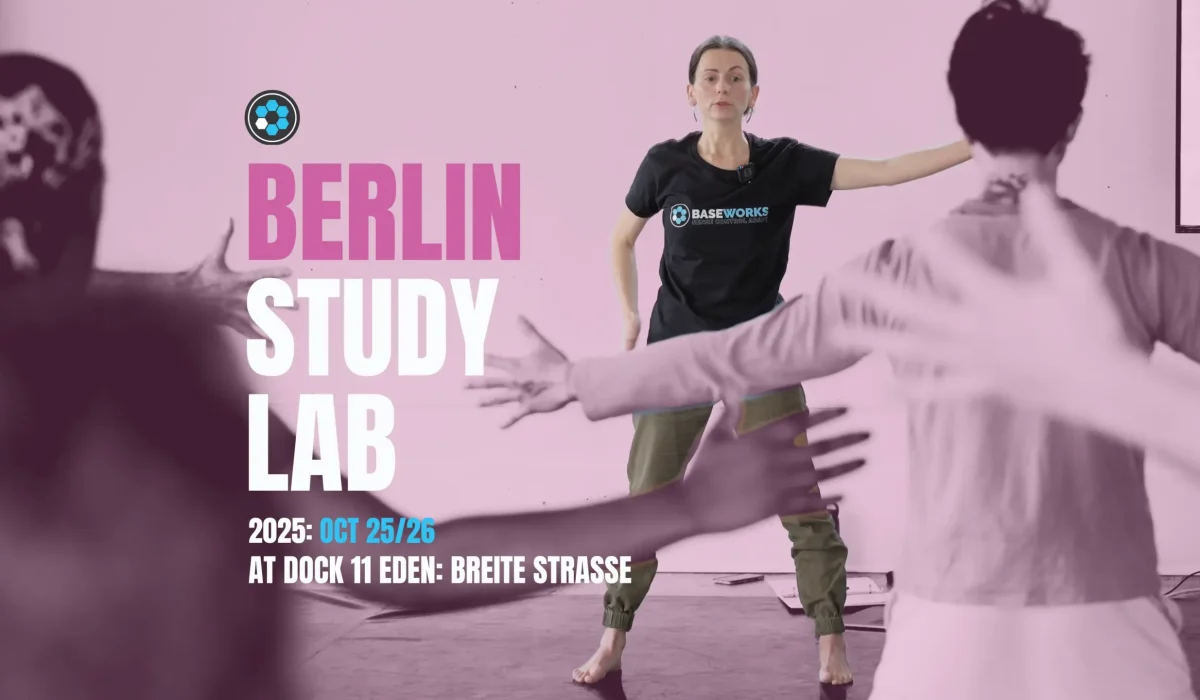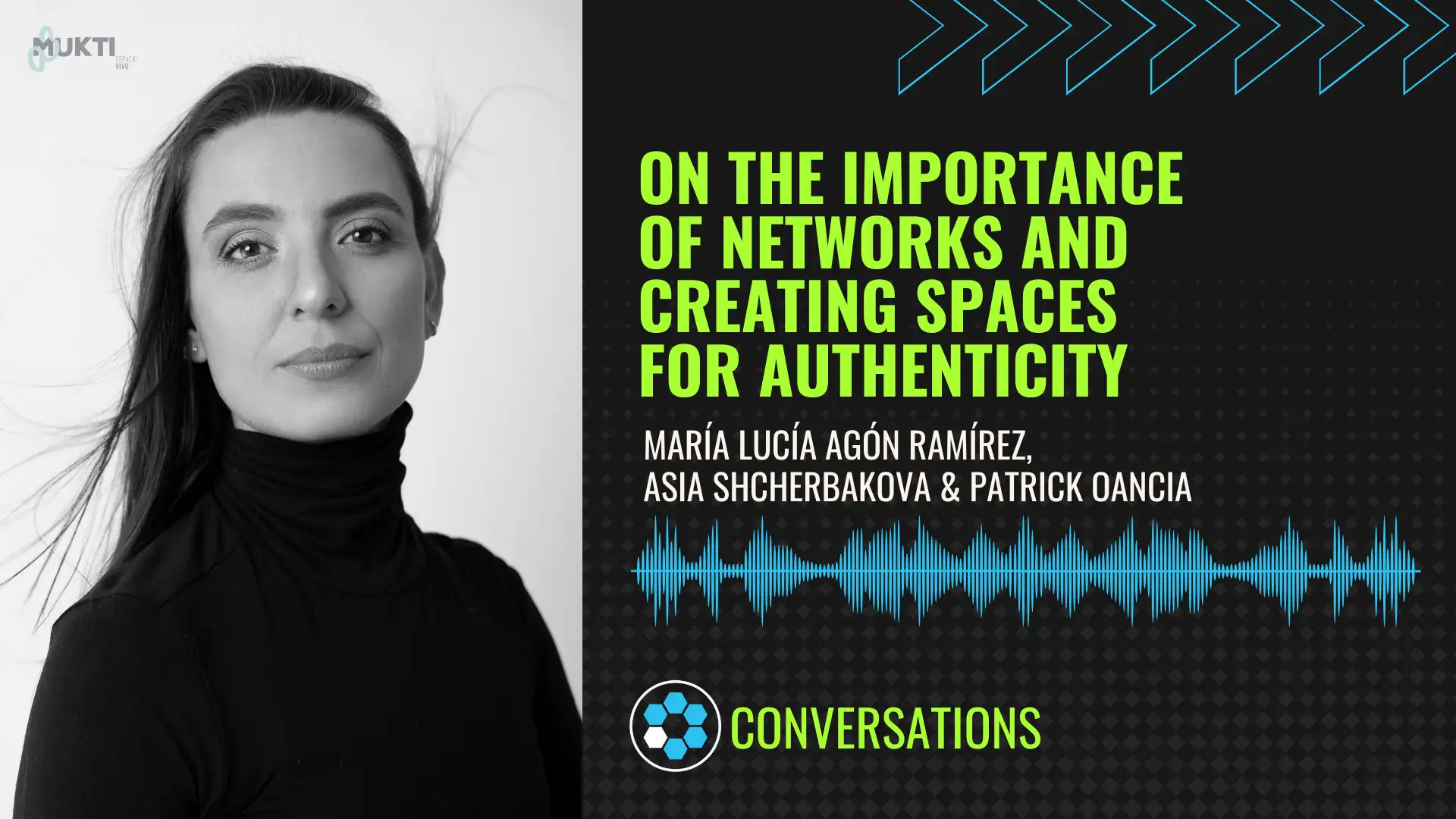This is a companion REFLECTION Transmission for the conversation that Patrick Oancia had with Ryan Hurst, one of the three founders of GMB fitness. It would make the most sense to first watch or listen to that episode.
In this transmission, we heard the story of Ryan who started off with gymnastics and then spent more than half of his life doing martial arts in Japan. And now, as he himself puts it, if somebody randomly asked what he’s doing, he would describe himself as a PE teacher whose goal is helping people to find movement autonomy (or physical autonomy) so that they could do more of the things they enjoy.
So, in this reflection I’d like to review how Ryan describes what he personally gained from all this extensive training. How he trained himself. Look at his approach to movement education, against his background. And of course we’ll take a look at the language and the concepts that he uses.
WATCH
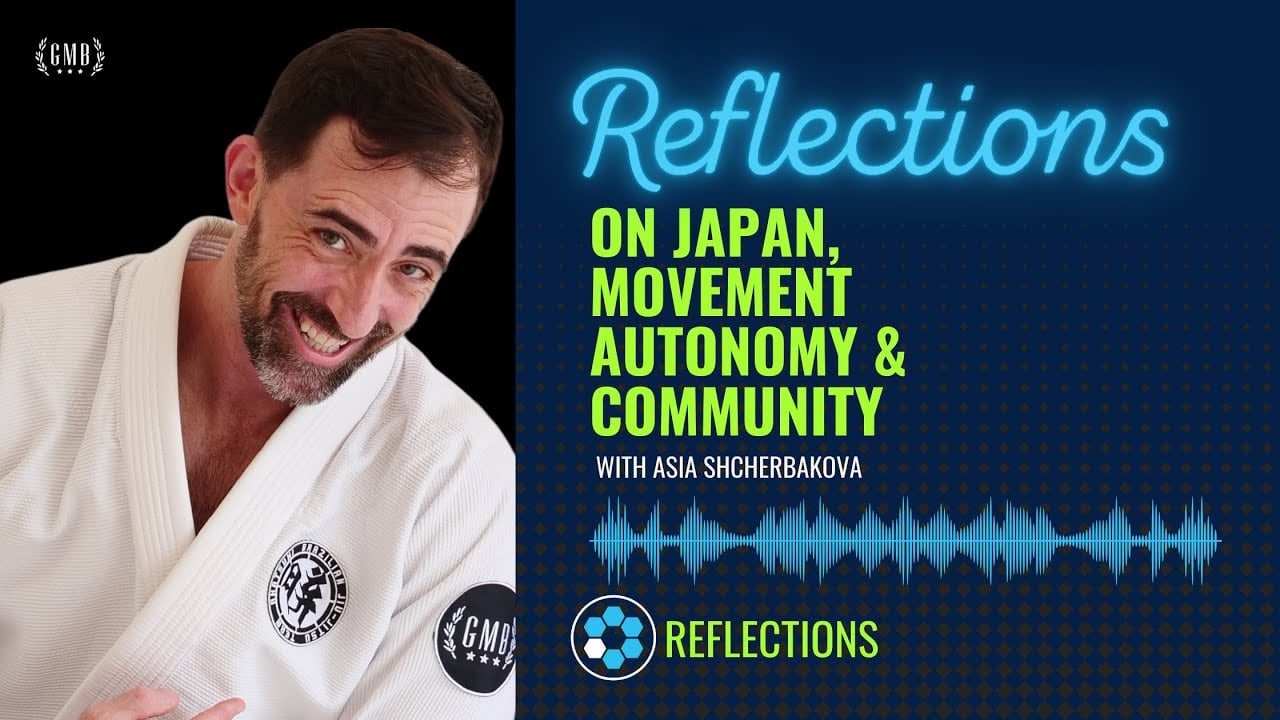
LISTEN
The Joy and Freedom of movement
Ryan says that what he loved about gymnastics was the “freedom of expressing his body in different ways”. Then, after a knee injury, when the door to competitive gymnastics has closed, he discovered Japanese martial arts, started learning Japanese language, and eventually ended up in Japan, where he spent more than 25 years and mastered several martial arts disciplines, including Kendo, Iaido, Judo, and Shorinji Kempo. Currently he is also training in Brazilian Jiu-Jitsu.
And while he talks about different experiences with these different martial arts, ke keeps saying that although he was often injured, and people kicked his ass many times, and wiped the floor with him, he repeats over and over that “it was great” and he “just loved it”.
So what he chooses to highlight as the most valuable things he gained from decades of dedicated practice is essentially the joy and the freedom of movement. And I guess this align pretty well with this core idea in GMB fitness that it’s about developing physical autonomy, the freedom of movement for the sake of doing more of the things you love and enjoy.
Training to become a new person
As you might know, I am a big proponent of drawing parallels between language and physical movement, so it was very interesting to hear about Ryan also drawing these parallels between learning language and martial arts training.
Ryan’s Japanese teacher back in the States had told him at some point that “the only way to learn anything is to actually experience it. You have to go and just make mistakes”.
So, at some point, Ryan told himself:
“The only way I’m gonna be able to improve my Japanese and get really good at Martial Art is if I just get rid of what I was, and just basically become a new person.”
I think it’s pretty cool. How many people do you know who approach their training like that?
So, Ryan adopted this completely immersive approach to study the Japanese language and martial arts.
First of all, it really helped that he was living in a rural area in the mountains of Niigata, far away from a big city, so he didn’t have too many distractions. He moved in with his martial arts teacher, which is still a fairly widespread practice in Japan for various forms of martial arts and some other traditional arts, where you become an apprentice and live either at the dojo and sometimes directly at your teacher’s house.
It’s very interesting how Ryan describes his training in this period. And I’m first going to quote him on language learning. He says:
“It’s with any learning. You first find a person that you want to mimic. And you use them as a template. You train their mannerisms, their speech patterns, intonation… You monitor what they do, and then practice, and practice, and practice to the point where those things become natural. And then, using this well-learned internalized material, you find other patterns that fit more closely to your character.”
It’s definitely true for language. One of the reasons why some people find it so difficult to learn new languages is because they just keep translating in their head from their native language word to word, instead of allowing the new language to take root and develop as a skill. I guess it’s also similar to the “fake it until you make it” idea, or just, creating a narrative and following it, as a technology for behavioral change, as for example Satoko has written in her article.
So, anyway, back to Ryan. Because he was living with his teacher, training several times a day, of course his martial arts practice was also very immersive. And he uses the same language to describe his martial arts training. He says:
“I was constantly in a state of how is that person doing it?”
I find it’s a very important point. Paying attention not to “what” the person is doing, like the overall general idea of the action, but “how” they are doing it, that is the details. In the first case you may end up doing what you already know how to do and get easily stuck in your progress, whereas the second approach is much more effective in acquiring new skills. Especially for those skills where you don’t fully understand why you are doing it in this way, or what are the important features of the movement. So, by mimicking another person as closely as you can to eventually discover the purpose and intention behind the movement.
And, of course, in the context of martial arts, and as it was mentioned many times in this transmission, this is the shu (守) of shuhari (守破離), following what your teacher does without questioning.
Templates vs Unique styles
There were two very interesting turns in how Ryan was talking about this.
The First one is that he mentions that he thinks that in the long run it probably wasn’t, mentally, the healthiest thing to do and it, quote, mentally kind of fucked him up down the road, end of quote. I would be so interested to hear more details about that, but unfortunately, Ryan only briefly mentions it in this transmission.
And the second thing he says around this point is that he had so much respect for his teacher. But then, he clearly remembers the day when he realized “he’s just a person.” And then Ryans says:
“I remember that was a big change for me because that allowed me to then finally realize, ok, use him as a template, do what he’s doing, but then understand that I eventually need to find my own style. And he would talk about this too all the time.”
So, Ryan says that living with his Kendo teacher obviously allowed him to get the techniques faster, but also helped to see the teacher as a person rather than a god. As he mentions, the word sensei (先生) in Japanese is spelled as saki ni umareta (先に生まれた), “the one who was born before you”. So you listen to the teacher not because they are a god, but simply because they have more experience.
Of course, across traditional arts in Japan, shuhari has a much deeper philosophical meaning than just “learn the basics first and then you can improvise”. One among many of these things, is that it helps to maintain the traditional form of the art, and the teachers actually have to pass the same techniques to the next generation, therefore becoming a vehicle, or a vessel of the arm form, transcending their egos.
But what I heard in the transmission is that this idea that the teacher is just a person and the student eventually has to find their own character, resonates with Ryan’s position in GMB where he says that he doesn’t want to be seen as a Guru. He says that his role as and educator, and I quote, is to
“leak out the information in a way that’s going to be what we feel good for that person at that time, so they’re not overwhelmed, so they can focus on that thing and actually get good at it”
Helping others to develop Physical Autonomy
Ryan describes the purpose of GMB Fitness like this:
“It’s about how can we help others do the things that they want to be able to do in their life. It’s not about doing more exercise, it’s about having the physical autonomy to know exactly where you are in your body so that you can do more of the things you love.”
According to Ryan, over the years, the method has evolved, together with the concepts used to describe it, which became more refined. And Ryan says that if they tried to use the method as it is today back when they started, the community would not have understood it.
I can really resonate with this realization, because we definitely see the same trend with Baseworks.
So, talking about the GMB method, Ryan mentioned 3 conceptual frameworks that I want to talk about, that, I feel, actually reflect what’s important in learning movement skills.
GMB Framework: Strength, Flexibility, and Control
So, firstly, Ryan talks about Strength, Flexibility, and Control as the key components of physical autonomy that can be trained through practice. Strength and Flexibility are, I guess, the most conventional categories of gains used in fitness, so no surprise there.
But Ryan stresses out that Control is the aspect that many places don’t talk about.
I cannot really comment on how many places don’t talk about motor control, because it’s one of the main general keywords of our interest. But, I definitely like the simplicity and the beauty of this 3-word formula.
As Ryan puts it, Compared to typical exercise, GMB is not about how many reps you need to build muscle, but about developing skills. So, when training a movement, you are not trying to do as many repetitions as possible, but rather do the movement with as much awareness as you can to better understand that movement that you train. So Control can be understood as skill, or as this quality of agility and intentionality in movement that can be seen in professional athletes.
The GMB Control is more or less synonymous with “motor control.” In Baseworks, we definitely put Control into our Top-4 of trainable qualities. But we always pair it with Sense, because motor control can be better understood as sensory motor control, and the sensory component is absolutely crucial.
I am just going to jump to the next framework now, but I am going to go back to this connection between sensory and motor at the end of this reflection.
GMB Framework: Assess, Address and Apply
So, in addition to the Strength-Flexibility-Control framework, they have the Triple A Framework: Assess, Address and Apply.
- You Assess where you are at, what’s holding you back.
- You Address what you need. If you are lacking in strength or range of motion, you will be targeting those specific prerequisites that you are lacking.
- And then Apply what you’ve learned to things you want to do.
Within this framework, the actual practice happens at the Address stage, informed by the Assess. And a practice session has 5 types of sections, which form another easy-to-remember framework, the 5 Ps: Prep, Practice, Play, Push, and Ponder.
GMB Framework: Prep, Practice, Play, Push, and Ponder
I think it’s a great framework, both conceptually and methodologically. I am going to review it first and then I am going to give a couple of comments.
- Prep is something like a smart and targeted warm-up section. For example, if your practice session is about squats, you will not be warming-up every joint in your body, but rather focus on hip mobility.
- Practice is the main part of the session, where you train a certain skill. And you are not chasing after for the numbers of reps, but for the quality and understanding of the movement.
- Play is where you experiment with well learned movements, never with new movements. And Ryan says that the Play aspect is something that you don’t hear people talk about very much, but it is an important step where you can explore and this is where the a-ha moments tend to happen. He gives an example of what Play could look like as going out of alignment to see what happens when you do that. And the Practice to Play transition was again, correlated with the Shu to Ha transition in ShuHaRi.
- Then, there’s Push, and Ryan says that this is what most people typically do in their workouts, but in a GMB session, you Push only in the movements which you already know well. And there is so much movement science wisdom in this approach, I wish more people thought like that. And you are supposed to increase the intensity only to the point where you can still keep good form.
- And then, the session finishes with Ponder. At this stage you reflect back on the entire session, analyzing how it went.
Ryan also says that this Five P framework is kind of modeled after how the 3 GMB fitness founders approach their own Martial arts practices. And here I quote:
“When we practice, we start off and we prepare our body and there’s a particular technique that we wanna practice, and then we get with our partner and we try out some variations, then we Spar, that’s the Push section of it, and at the very end we sit and we reflect?”
Framing is very important, and these GMB frameworks manage to focus on very important aspects of physical education that receive little attention in conventional fitness.
Skilled Enough to Play
If you listened to the Transmission episode, you may have noticed how Ryan puts emphasis on whether a movement is already well learned or not to determine whether it’s gonna be used for Practice or for Push and Play.
Different parts of the same movement are handled by different parts of the brain, and also different stages of skill acquisition are handled by different, often competing systems. So, the breakdown of the practice into Practice, Play and Push actually respects what the nervous system has to do in order to produce a new skill, so I think it’s a really cool framework.
As Patrick mentions in the Transmission, the trajectories in GMB fitness and Baseworks are quite similar, at least in some aspects, so here I’d like to try and map the similarities between our approaches and vocabulary and highlight the differences.
Superimposition: GMB Frameworks in Baseworks Practice
The Prep, Practice, Play, Push, and Ponder framework in Baseworks would be spread out evenly across the entire practice session, or you could say distributed, because a lot of things are distributed in Baseworks. So we will be doing Prep, Play, Push and Ponder, all throughout the Practice, although which aspect comes to the forefront at each point will depend on the type of the movement, on the level of skill, on the conditions on the day, and many other factors. And the ability to decide when to Prep, when to Play, when to Push and when to Ponder is also something we train in the Baseworks Practice.
- For Prep, We don’t do any specific warm-up sequence of movements, whether targeted or not, but if a particular movement requires some mobility work or considerations to avoid injury, that will be dialed into how we perform the movement.
- For Play, our Micromovements are all about exploration. Play also exists at the edge of Intensity Modification, I guess, which is one of the Baseworks Movement principles, which, in some aspects can be roughly compared to the Autoregulation concept in GMB language.
- The Push aspect in Baseworks is very similar to the GMB idea that the upper limit of the intensity you can use is where you can still keep the form. And in fact, a lot of training in Baseworks for many people is about unlearning the Push attitude.
- Ponder, again, exists as the attitude from start to finish, noticing how different aspects of different movements are interconnected with each other and other variables in your condition. We had several people explicitly tell us that Baseworks for them is a metaphorical place that connects the dots.
So while in Baseworks these 5 types of learning activities are all embedded into the mesh of the practice and it takes time to get your head around them, in GMB they are clearly separated into stages, making it super easy for people to understand and to start benefiting from them from day 1. Which is great.
In the Triple A Framework (Assess, Address, Apply), the Assess and Address aspects in Baseworks work in a cycle within each practice session and even within every movement, whereas the Apply aspect goes outside into other practices or daily life, and feeds back into the Baseworks Practice as a source of new learning perspectives. So in this way, again, Baseworks approach is much more cyclical. We don’t actually view skill development as a linear process, and we constantly work towards revisiting and rediscovering more and more intricate aspects of the existing skills.
The double-edged sword of complex whole-body movements
Another related and very important difference in our approaches in how we think about whole-body movements. The GMB idea is that the best way towards physical autonomy is working with complex physical skills rather than isolating muscle groups in traditional exercises. I guess we share the view on the traditional gym workouts in this aspect, but where GMB says, “let’s focus on building complex whole-body skills,” in Baseworks, we say, “well, everything we do already is complex whole-body skills.”
So what we do in Baseworks is actually that we are breaking down complex whole-body skills into more fundamental skill building blocks.
When skills become a problem
When talking about skills, GMB follows the idea of motor skills used in sports, where your final goal is to develop more complex skills so that you can score more points. Or, in the case of GMB, to have more physical autonomy. So a skill has this positive connotation. Something that we can aspire to develop.
In Baseworks, we use the word skill in a more general and neutral way to refer to any well-learned action that can be exercised automatically, and most of the time with little awareness of how exactly it is performed.
One of our core ideas is that most people are largely not aware what exactly their bodies are doing when performing complex movements. By becoming more aware of various aspects of complex movements and learning to control these aspects, developing a fundamental movement vocabulary, people tend to spontaneously discover how to improve in movements that are not even part of our Baseworks curriculum.
So in this way, the GMB approach is more straightforward, where you have a physical goal, and the program strategically guides you towards that goal in a way that is aligned with your current abilities and conditions. So it is much more targeted and personalized than many fitness programs.
Whereas in Baseworks, the approach is more open-ended. Our program guides you to better understand and control your body, so you can discover new experiences and goals. Of course, we can work with someone in a more closed way, focusing on addressing their needs and concerns. But, for example, from my own experience, I can say that the outcomes of the Baseworks training that I value the most lie completely outside of what I could imagine when I started the training, and I don’t even actually have to move to experience them.
Movement for the sake of movement?
There’s one more observation I’d like to make here before I wrap up. It took Ryan about one year to get the black belt in Kendo. When he describes his transition from gymnastics to martial arts, he says that it was relatively easy because he already had, as he puts it, a “good spatial awareness, the ability to use the body in different ways and being comfortable with it”.
I find it interesting that when he talks about his own experience and he chooses to highlight 3 things here, they are different shades of Awareness and Control, and not Strength, Flexibility, and Control. Although all the 3 GMB founders have extensive background in Martial arts, GMB is not martial arts. But what they bring in from martial arts is a certain attitude towards the practice, and also this idea that movement should have intentionality and meaningful context.
Ryan has written a very entertaining and witty article about Mindfulness where he says that
“movement for the sake of movement, without a meaningful context that matches your life, can lead to random, inauthentic displays of “mindfulness.” If it’s not meaningful with intent, it’s meaningless and empty”.
I really recommend you to check it out.
My experience vs Your experience
Martial arts training is what Ryan says he absolutely loved, but when it comes to GMB fitness, he says, I quote, “It’s not about me, it’s about you.” I feel a lot of compassion and supportive attitude towards the GMB community, and it is amazing how the community responds. If you look at their Instagram, you will know what I mean. And Ryan himself in the transmission said that “it’s all about the community”. If you are listening to this and you are not familiar with GMB fitness, I really recommend you check it out. Great thought threw method that goes beyond traditional fitness categories and narratives, great community.
And finally, on the last note, with all that experience in Niigata, the complete immersion in Japanese culture, the reverence to the culture and the proactive desire to really understand it, showing up and actually putting effort it, hearing all that, I’m really sensing that it must have been very deep. More than just simply physical autonomy in the sense of being strong, flexible and skilled in movement.
Obviously, there was not enough time to go into everything. I personally would have liked to hear a little bit more about the concrete gains and realizations from Ryan’s personal experience, because those verbal descriptions are important to expand the pool of information about concrete experiences potentially attainable through various types of practices. Going deeper into personal introspective realizations is also one of the things Patrick feels really passionate about with Baseworks, so no doubt he’ll go deeper into these things when Ryan comes on again.
And, I’d like to finish off with a very inspirational quote from this transmission with Ryan, where he said:
“I don’t believe in luck. I believe that things happen if you actually not just search, but purposely put yourself in a position to be open to those opportunities.”
I wish all the viewers, listeners, and readers to be able to take such a proactive approach in whatever it is they want to achieve.
Show Notes
0:00 – Introduction
2:08 – The Joy and Freedom of movement
03:18 – Training to become a new person
06:46 – Templates vs Unique styles
09:03 – Helping others to develop physical autonomy
10:04 – GMB Framework: Strength, Flexibility, and Control
11:47 – GMB Framework: Assess, Address and Apply
12:29 – GMB Framework: Prep, Practice, Play, Push, and Ponder
15:09 – Skilled Enough to Play
16:02 – Superimposition: GMB Frameworks in Baseworks Practice
19:01 – The double-edged sword of complex whole-body movements
19:50 – When skills become a problem
21:49 – Movement for the sake of movement?
23:21 – My experience vs Your experience
25:38 – Closing notes
Companion Transmission Conversation:
Articles:
Satoko’s article about Behavioral Change
Ryan’s article about Mindfulness: https://gmb.io/mindfulness/
Asia mentions the outcomes of the Baseworks training she values the most
Asia’s article on the Distributed aspects of Baseworks
Patrick’s article about the Self-Regulation aspects of the Baseworks method
Martial Arts
Kendo
Iaido
Judo
Shorinji Kempo
Brazilian Jiu-Jitsu
Japanese Martial Arts Related Words
Sensei
Shuhari
Uchideshi (live-in apprentice)
Ryan’s links:
GMB Fitness Website
About Ryan
GMB Instagram
Autoregulation in GMB



